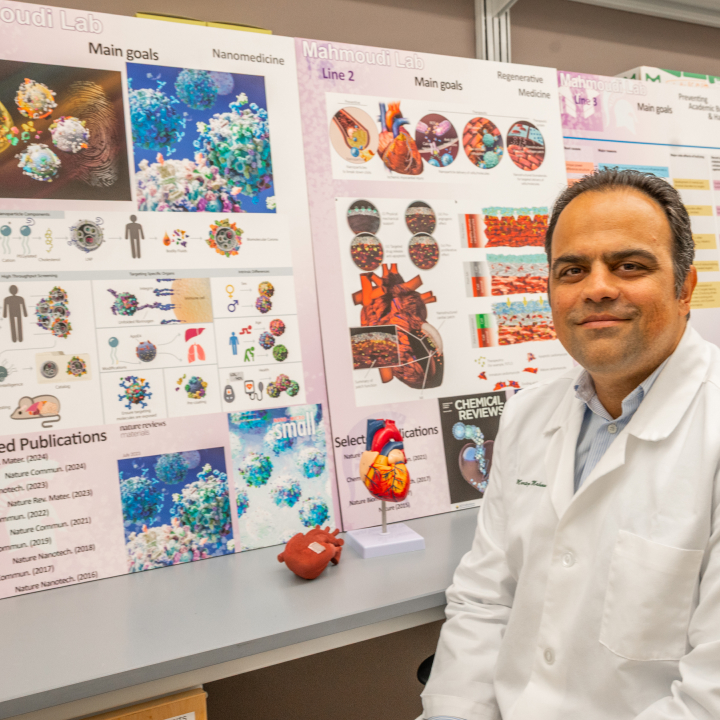
Nanomedicine and AI Uncover Rare Biomarkers for Early Disease Detection

Morteza Mahmoudi, associate professor in the Department of Radiology and Precision Health Program in the Michigan State University College of Human Medicine, studies nanomedicine for various biomedical applications including early detection of diseases. Photo credit: Michigan State University/Derrick L. Turner
Imagine Spartan Stadium packed with 75,000 fans, all wearing green and white jerseys — except one person in a solid green shirt. Finding that person would be tough. That’s how hard it is for scientists to find disease markers — called biomarkers — in the blood. And instead of one stadium, researchers must search through the equivalent of 100,000 stadiums worth of information.
To tackle this challenge, a research team from Michigan State University, working with scientists from Augusta University, Karolinska Institute and Stanford University, used nanomedicine, artificial intelligence, or AI, and a method for studying cause and effect.
Their goal was to find rare biomarkers for prostate cancer that has spread, and a condition called atherosclerosis, which causes clogged arteries. Their research findings were recently published in the Chemical Engineering Journal.
“Cells affected by disease secrete proteins and other biomolecules into the bloodstream,” said Morteza Mahmoudi, associate professor in the Department of Radiology and the Precision Health Program in the MSU College of Human Medicine. “These proteins provide valuable clues about a patient’s health status or disease, and they can be collected and studied. Once identified, they pave the way for a significant advancement in the development of personalized medical treatments, or precision medicine.”